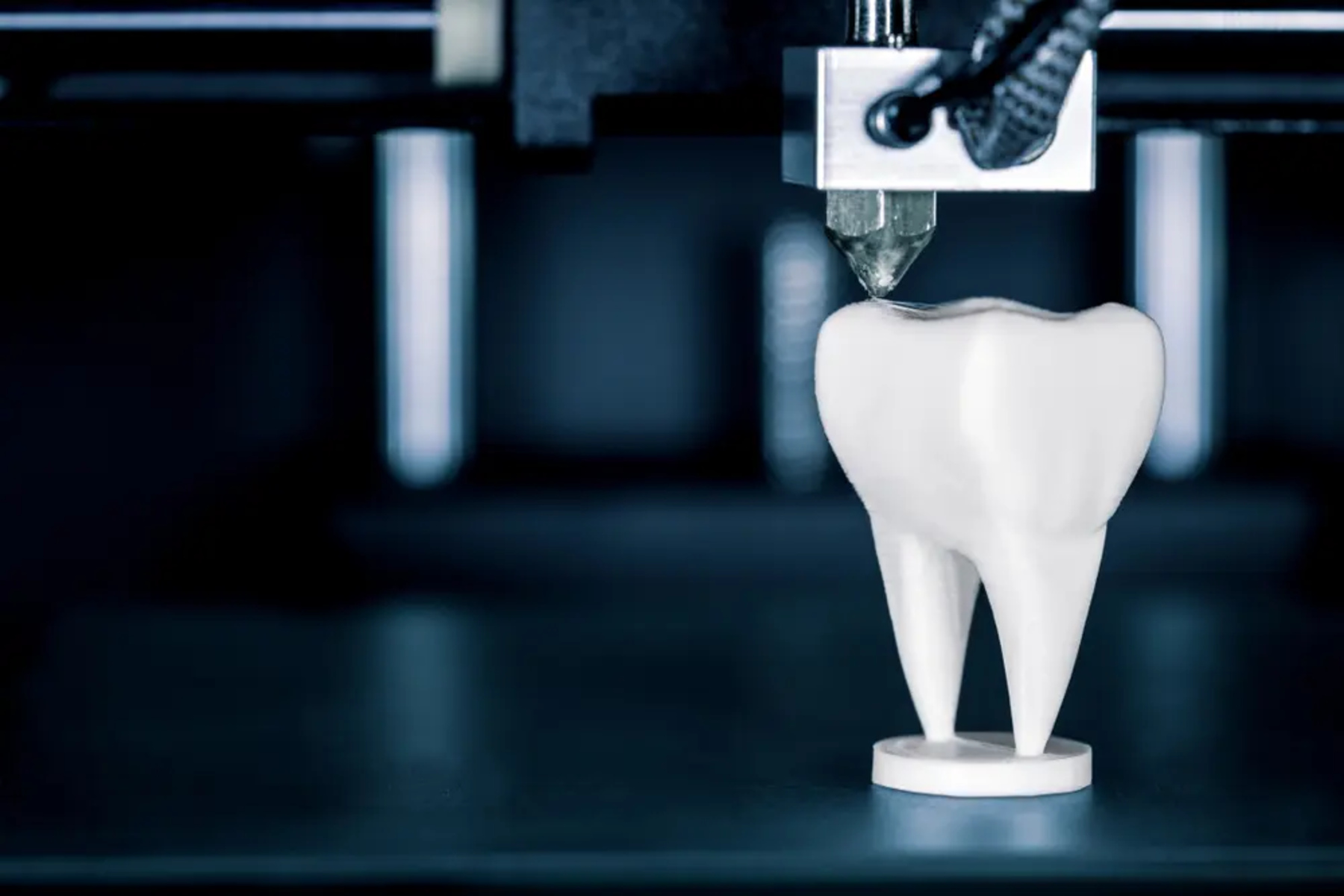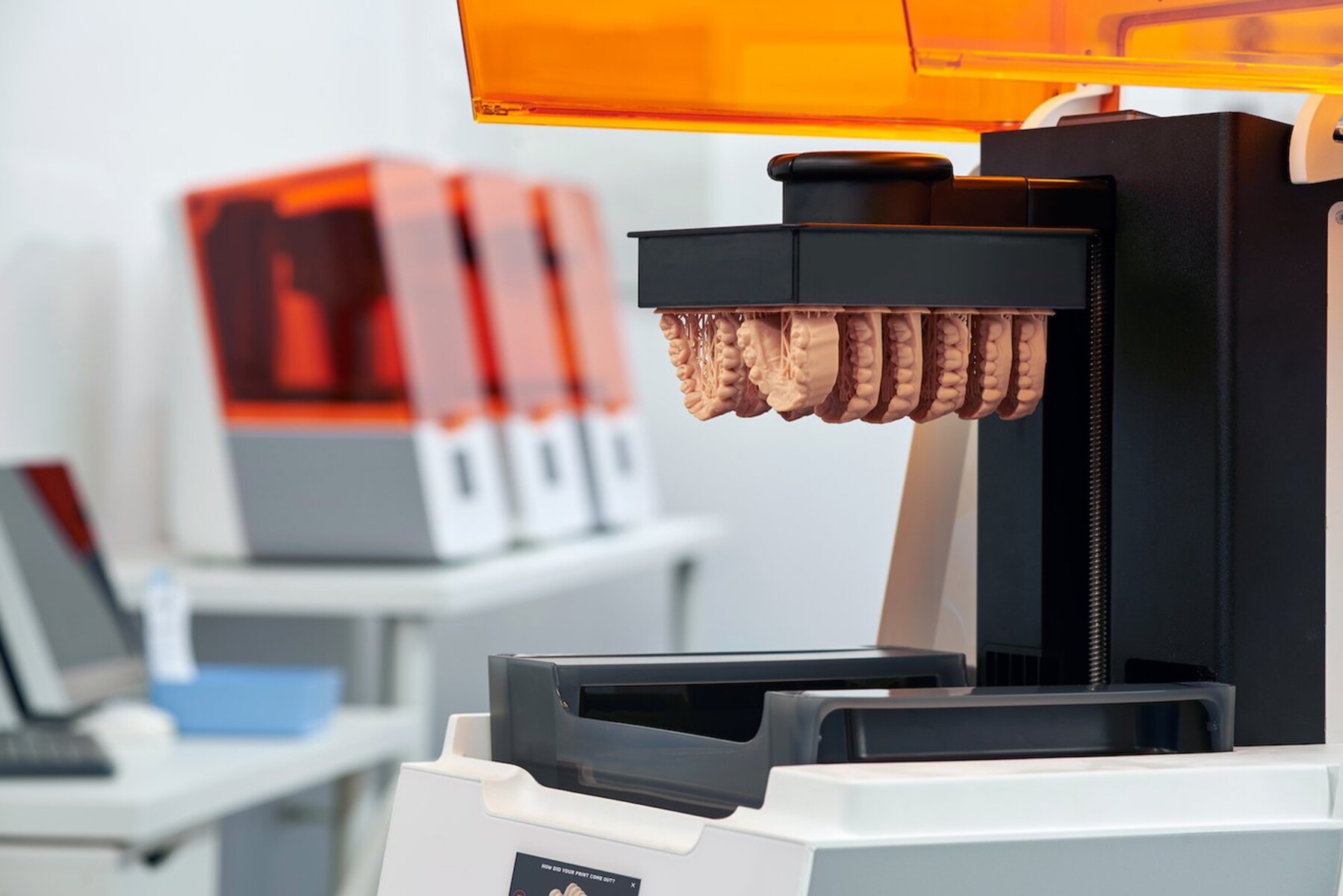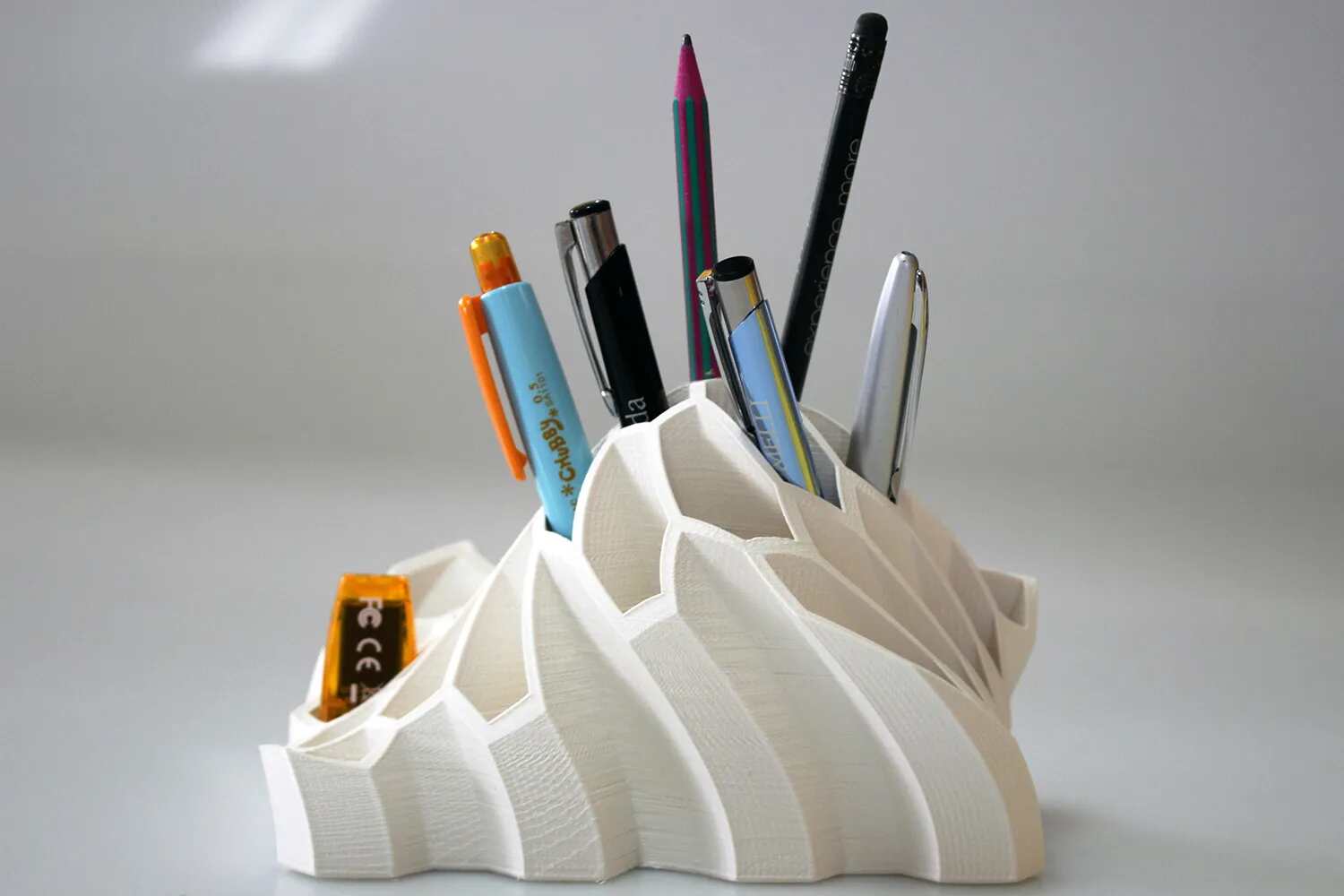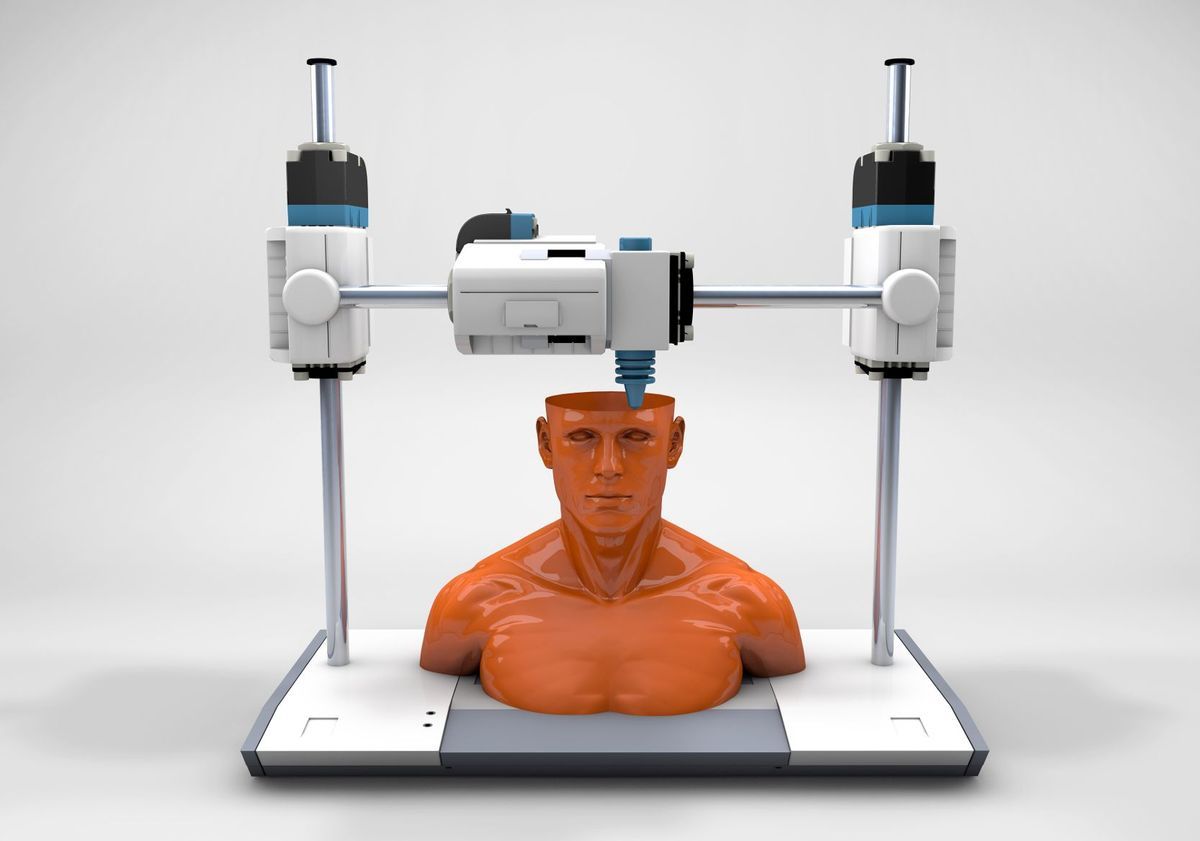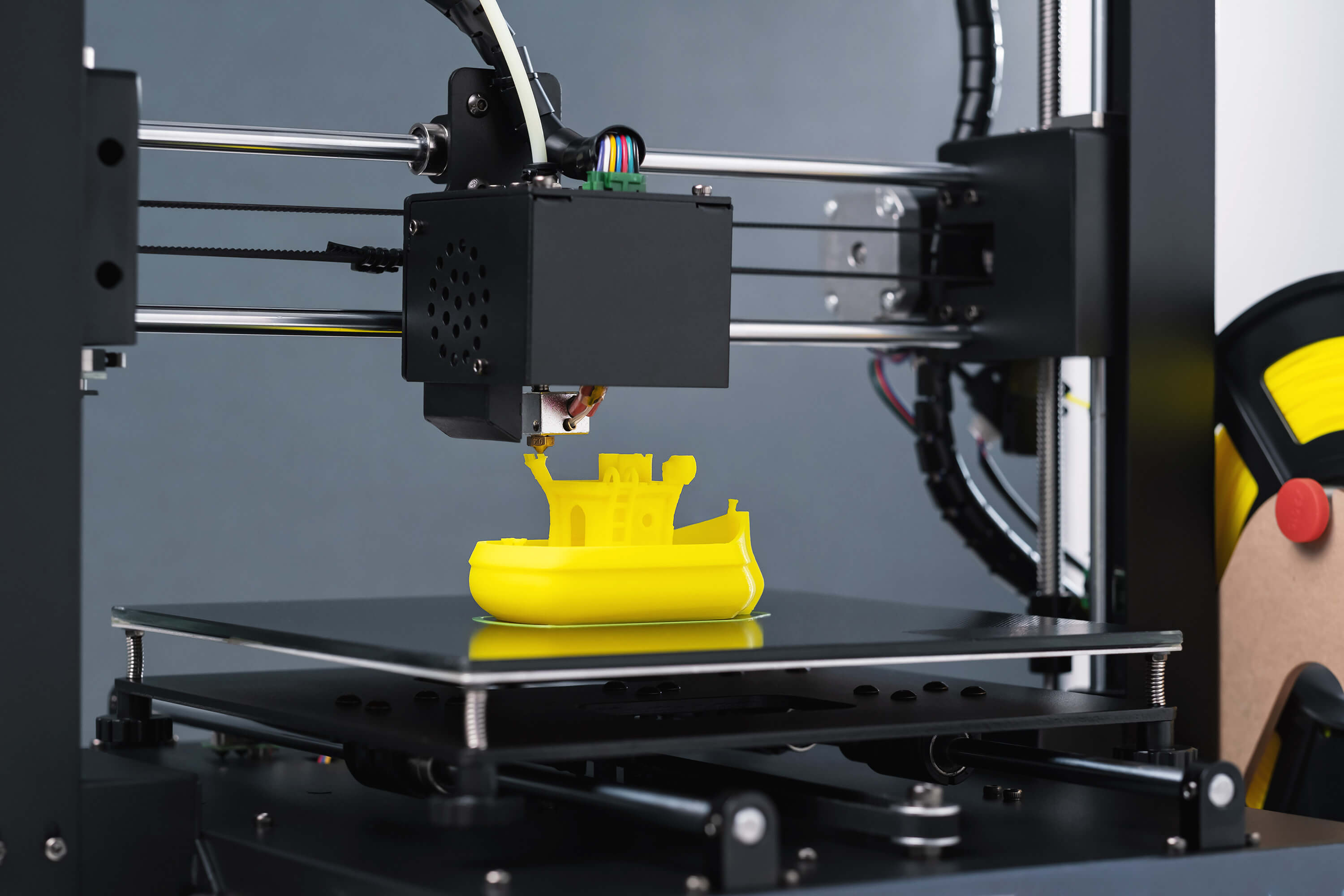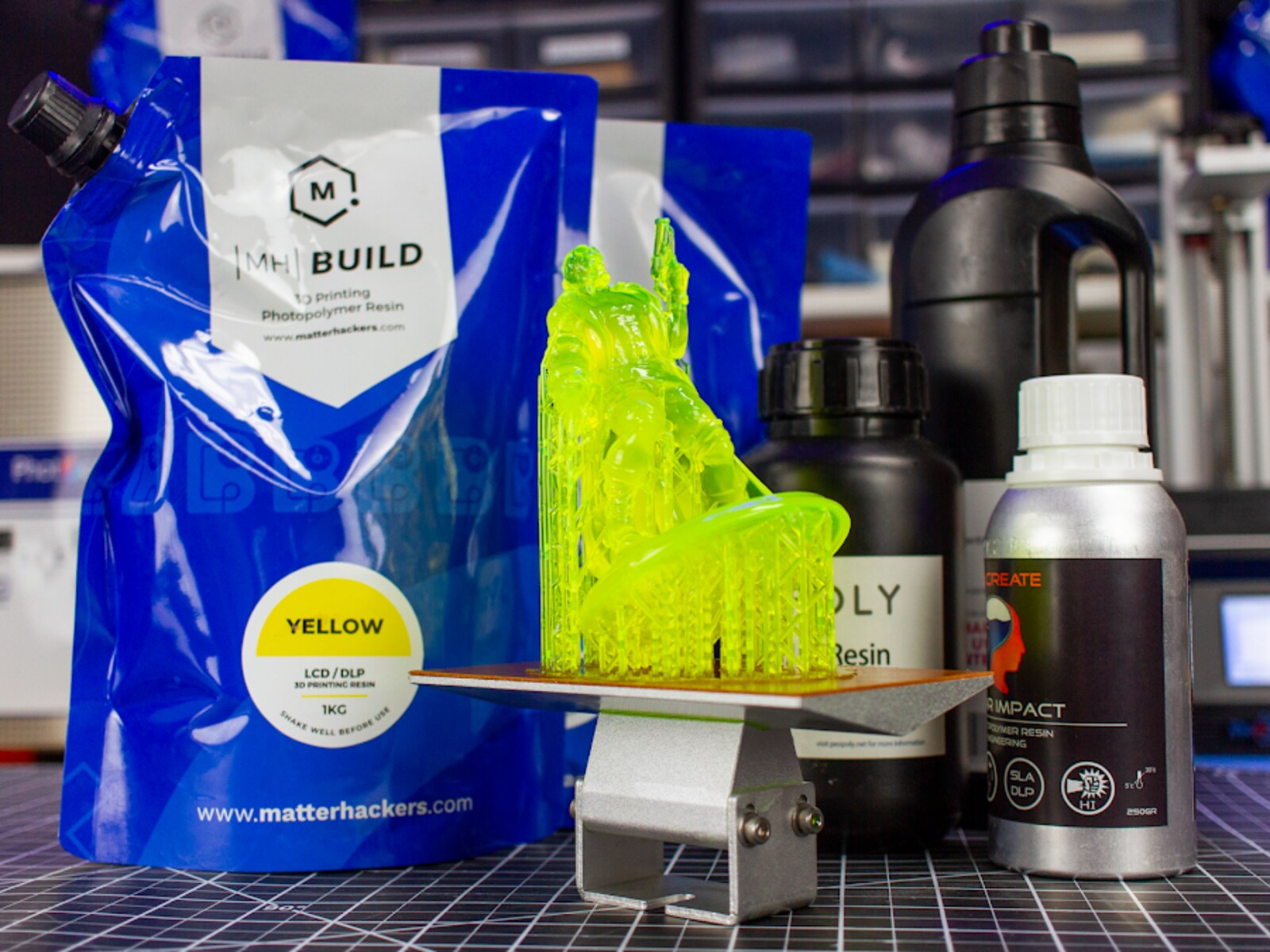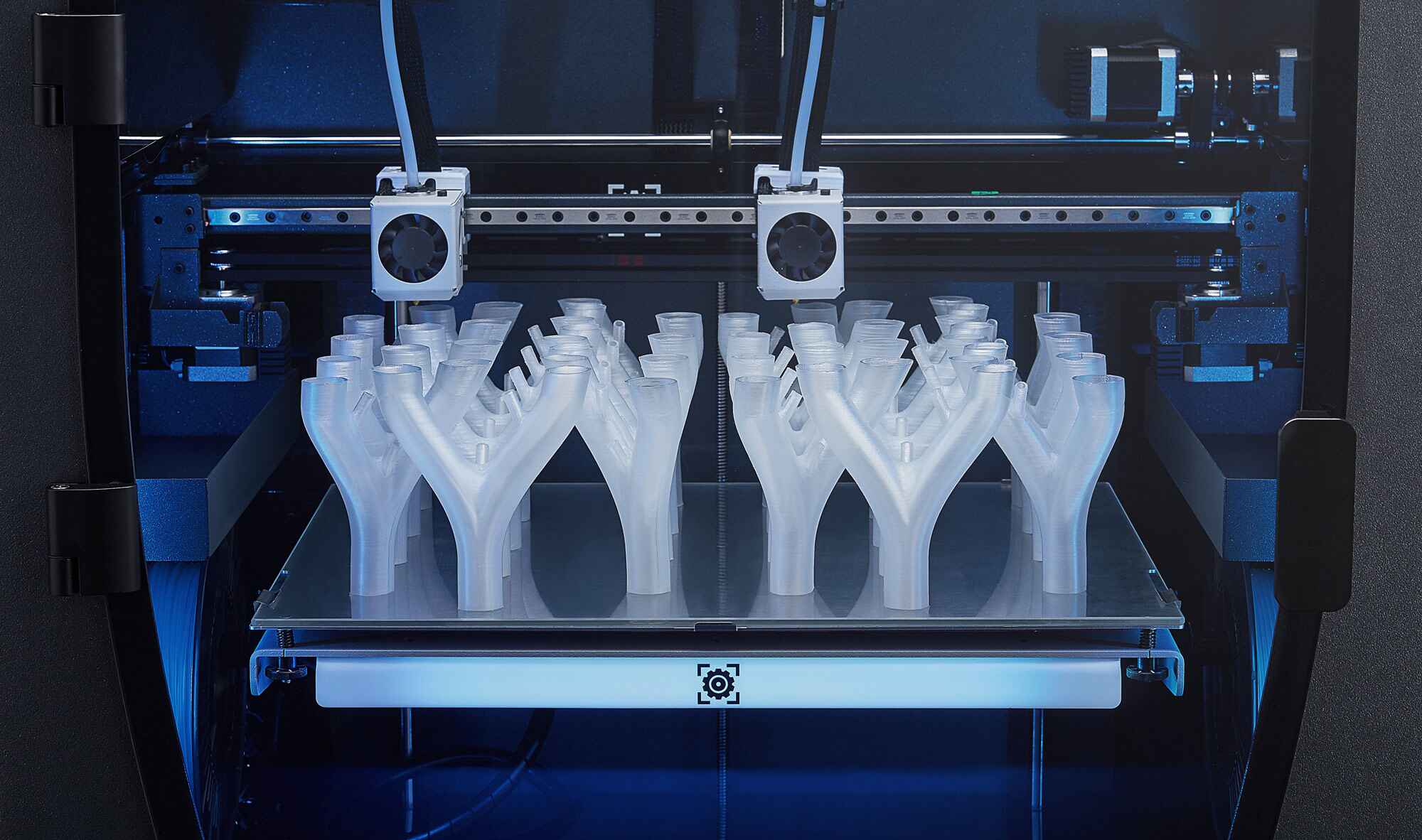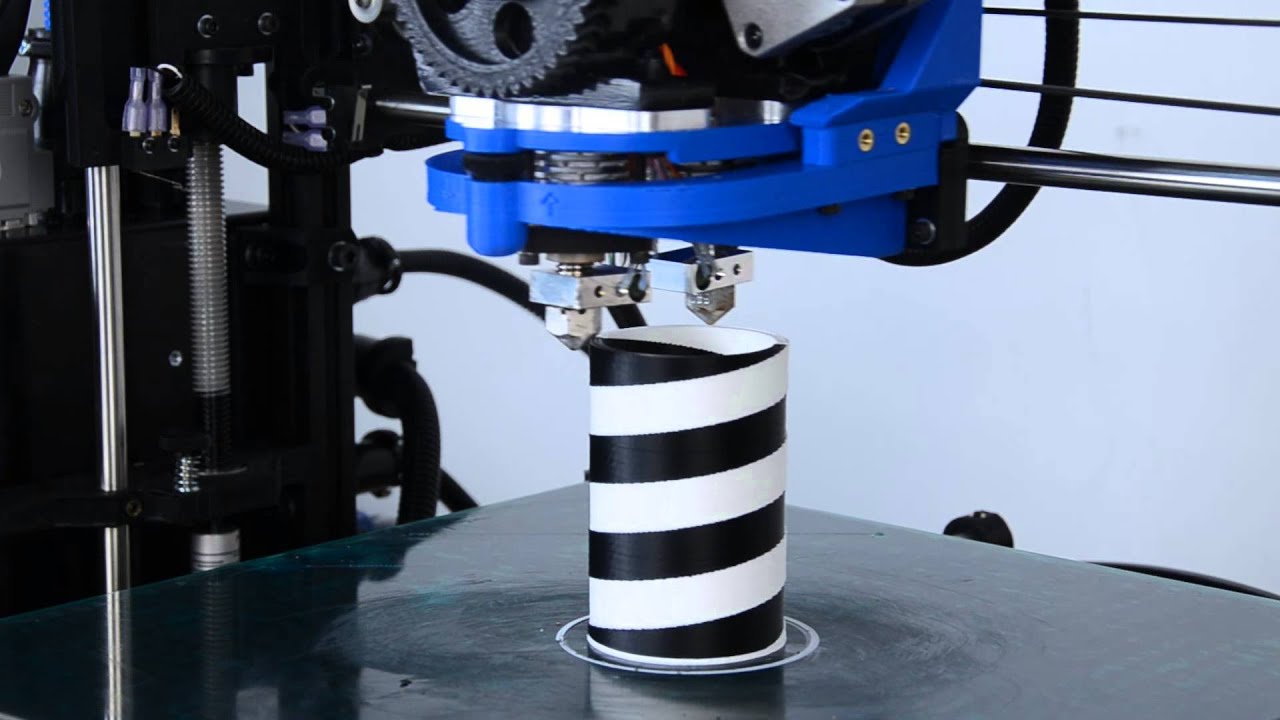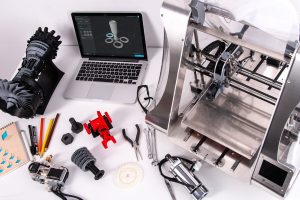Introduction
3D printing, also known as additive manufacturing, has revolutionized various industries, and dentistry is no exception. This cutting-edge technology has introduced innovative solutions to traditional dental practices, enabling more precise, efficient, and patient-friendly methods. By utilizing 3D printing techniques, dental professionals can create custom-made dental models, prosthetics, surgical guides, and much more.
In the past, traditional methods involved manual labor, multiple steps, and extensive waiting times. With the advent of 3D printing in dentistry, the process has become streamlined, resulting in faster turnaround times and improved patient experience. Dentists can now accurately replicate dental structures with utmost precision while reducing human error.
One of the key advantages of 3D printing in dentistry is the ability to create intricate and customized dental prosthetics, aligners, and surgical instruments. This technology has made it possible to tailor treatment plans to the unique needs of each patient, ensuring optimal results. Additionally, 3D printing has democratized access to dental care by reducing costs, making it more affordable and accessible for patients.
3D printing has also revolutionized education and training in dentistry. Dental students can now have hands-on experience with various procedures and techniques through realistic 3D-printed models. This not only enhances their skills and knowledge but also prepares them for real-world scenarios.
In this article, we will explore the numerous benefits of 3D printing in dentistry. From dental models and impressions to dental prosthetics, surgical guides, aligners, and customized tools, we will delve into the ways this technology is transforming oral healthcare. Join us as we dive into the exciting world of 3D printing and discover its impact on the field of dentistry.
Benefits of 3D Printing in Dentistry
3D printing has brought about a multitude of advantages in the field of dentistry. This cutting-edge technology has revolutionized various aspects of oral healthcare and has become an indispensable tool for dental professionals. Let’s take a closer look at some of the key benefits of 3D printing in dentistry:
- Dental Models and Impressions: 3D printing has transformed the process of creating dental models and impressions. Dentists can now create highly accurate and detailed models of patients’ teeth and gums, allowing for precise treatment planning. This eliminates the need for messy and uncomfortable traditional impression materials, providing a more comfortable experience for patients.
- Dental Prosthetics: Traditional methods of creating dental prosthetics can be time-consuming and involve multiple steps. With 3D printing, dental prosthetics such as crowns, bridges, and dentures can be produced quickly and efficiently. The customization capabilities of 3D printing allow for a perfect fit and aesthetic appearance, enhancing patient satisfaction.
- Surgical Guides: 3D printing enables the creation of surgical guides, which are essential in complex dental procedures such as implants. These guides provide a precise blueprint for the implant placement, ensuring accuracy and minimizing surgical errors. This improves the overall success rate of implant surgeries and reduces patient discomfort.
- Aligners and Orthodontic Appliances: Straightening teeth and correcting malocclusions have become more convenient and efficient with 3D printing. Clear aligners, such as Invisalign, can be customized for each patient using 3D-printed models. This allows for a more accurate and comfortable fit, resulting in improved treatment outcomes.
- Dental Implants: 3D printing plays a crucial role in the fabrication of dental implants. The technology allows for the creation of patient-specific implant components, ensuring a perfect fit and alignment. This leads to better integration with the jawbone and long-term success of the implant.
- Customized Tools and Instruments: Traditional dental tools and instruments often lack customization options. With 3D printing, dental professionals can create custom tools and instruments tailored to specific procedures and patient requirements. This enhances the efficiency and precision of dental treatments.
- Education and Training: 3D printing has transformed dental education and training. Dental students can now have access to realistic 3D-printed models, providing them with a hands-on learning experience. This enables them to develop their skills and knowledge in a more practical and interactive manner.
These are just a few examples of how 3D printing is making a significant impact on dentistry. The technology continues to evolve, opening up new possibilities for the field and improving patient care. As 3D printing becomes more advanced and accessible, we can expect to witness further advancements in dental treatments and procedures. Embracing this innovative technology is crucial to staying at the forefront of modern dental practice.
Dental Models and Impressions
Traditionally, creating dental models and impressions involved the use of messy and sometimes uncomfortable materials. However, with the advent of 3D printing in dentistry, this process has been significantly improved. Dental professionals can now utilize this technology to produce highly accurate and detailed dental models and impressions, revolutionizing treatment planning and patient experience.
One of the key benefits of 3D printing in this aspect is the elimination of traditional impression materials such as alginate or silicone. Instead, a digital scan of the patient’s teeth and gums is taken using an intraoral scanner. This scan is then converted into a 3D digital model, which can be manipulated, analyzed, and ultimately 3D printed.
The use of 3D-printed dental models offers several advantages. Firstly, these models are incredibly precise, capturing every detail of the patient’s teeth and gums. This level of accuracy allows for more accurate treatment planning, especially in complex cases that require precise measurements and alignment.
Moreover, 3D-printed dental models are highly durable and long-lasting. They provide a sturdy foundation for various dental procedures, such as the fabrication and fitting of dental prosthetics like crowns, bridges, and dentures. Dentists can use these models to ensure a perfect fit and achieve optimal aesthetic results for their patients.
From a patient’s perspective, 3D-printed dental models offer a more comfortable experience. Traditional impression materials can be messy, have an unpleasant taste, and may cause discomfort, especially for patients with a strong gag reflex. By using 3D printing technology, dentists can eliminate the need for these materials, making the process more pleasant and less invasive.
Furthermore, 3D-printed models allow dental professionals to involve patients more actively in their treatment planning. Dentists can discuss treatment options and demonstrate the expected outcomes using these accurate 3D models, enhancing patient understanding and satisfaction.
Overall, the use of 3D printing in dental models and impressions has revolutionized the treatment planning process. This technology offers precise, durable, and patient-friendly alternatives to traditional methods. Dentists can rely on 3D-printed models to achieve better treatment outcomes and provide an enhanced experience for their patients.
Dental Prosthetics
When it comes to dental prosthetics like crowns, bridges, and dentures, 3D printing has transformed the way these appliances are created, offering numerous benefits for both dental professionals and patients.
Traditionally, the process of fabricating dental prosthetics involved multiple steps, including taking impressions, creating molds, and manually crafting the prosthetics. This process could be time-consuming and prone to human error. Moreover, adjustments or corrections often required additional appointments and prolonged treatment periods.
With 3D printing, the production of dental prosthetics has become much more efficient and precise. Using digital scans of the patient’s teeth and gums, dental professionals can design custom prosthetics using specialized software. These digital designs can then be 3D printed using biocompatible materials such as resin or ceramic.
The customization capabilities of 3D printing allow for a perfect fit and aesthetic appearance. Dental professionals can ensure that the prosthetics match the patient’s natural teeth in terms of shape, size, and color. This creates a seamless integration between the prosthetics and the rest of the oral cavity, enhancing the overall aesthetics of the smile.
Another advantage of 3D-printed dental prosthetics is the speed of production. Traditional methods could take days or even weeks to complete, involving multiple appointments and long waiting times for patients. With 3D printing, the prosthetics can be produced in a matter of hours, significantly reducing the treatment timeline and providing faster and more efficient solutions for patients.
The use of 3D printing technology also allows for easy modifications and corrections. If adjustments need to be made to the prosthetics, dental professionals can easily update the digital design and reprint the appliance. This eliminates the need for additional appointments and ensures that patients receive the best-fitting prosthetics without unnecessary delays or inconvenience.
Furthermore, 3D printing has made dental prosthetics more accessible and affordable. The streamlined production process and reduced labor costs associated with 3D printing have resulted in cost savings, making these prosthetics more affordable for patients. This brings high-quality dental prosthetics within reach for a wider range of individuals.
Overall, 3D printing has revolutionized the fabrication of dental prosthetics, providing greater precision, efficiency, and affordability. Dental professionals can deliver customized prosthetics with improved aesthetics, fit, and functionality, enhancing the overall quality of patient care.
Surgical Guides
3D printing has transformed the field of dentistry by revolutionizing the creation of surgical guides. These guides are essential in complex dental procedures, particularly in implantology, where precision is crucial for successful outcomes. With the advent of 3D printing, the process of fabricating surgical guides has become more accurate, efficient, and patient-friendly.
Traditionally, dental surgeons relied on manual techniques, including using surgical stents or drilling freehand, to guide implant placements. However, these methods were not always precise, leading to potential errors or complications. With 3D printing technology, dental professionals can now create custom-designed surgical guides that provide accurate and personalized guidance during implant surgeries.
The process begins with a detailed digital scan of the patient’s mouth, capturing the exact position and dimensions of the teeth and supporting structures. Using specialized software, dental professionals can then virtually plan the implant placement, taking into account factors such as bone density and neighboring anatomical structures.
Based on this digital plan, a surgical guide can be designed to fit precisely over the patient’s dentition. The guide includes pre-determined drill holes or channels that direct the dentist’s drilling instruments to the precise locations for implant placement. These guides act as a surgical roadmap, ensuring accuracy and minimizing the risk of damage to surrounding structures.
Once the digital design is finalized, it can be 3D printed using materials such as biocompatible resins or metals. The 3D-printed surgical guides are lightweight, durable, and highly accurate, providing the dental professional with a reliable tool for precise implant surgeries.
Using 3D-printed surgical guides offers several advantages. Firstly, it saves time during the surgery itself, as the dentist can confidently follow the guide, reducing the need for guesswork and minimizing potential complications. Additionally, it helps achieve optimal implant placement, ensuring proper angulation, depth, and alignment, which are crucial for long-term success and stability of the implants.
The use of surgical guides also enhances patient safety and comfort. With the precise guidance provided by 3D-printed guides, the surgery can be performed with minimal invasiveness, reducing the risk of tissue trauma and post-operative discomfort for the patient. Moreover, the accuracy of the implant placement achieved with surgical guides can minimize the need for additional surgeries or corrective procedures.
Overall, the utilization of 3D-printed surgical guides in dentistry has revolutionized implant surgeries. The technology allows for precise planning and execution, resulting in improved outcomes and patient satisfaction. Dental professionals can confidently navigate complex implant placements, saving time, reducing complications, and ultimately delivering better patient care.
Aligners and Orthodontic Appliances
3D printing has ushered in a new era for orthodontics by revolutionizing the design and production of aligners and other orthodontic appliances. Aligners, such as Invisalign, have become increasingly popular among patients seeking discreet and convenient orthodontic treatment. With the use of 3D printing technology, the fabrication of aligners and orthodontic appliances has become more precise, customizable, and efficient.
Traditionally, orthodontic treatments involved the use of traditional braces, which often relied on metal brackets and wires to straighten teeth. However, with the advent of 3D printing, clear aligners have emerged as a popular alternative. These aligners are custom-made to fit each patient’s teeth and facilitate gradual tooth movement.
The process begins with a digital scan or impression of the patient’s teeth, which is transformed into a 3D digital model. Orthodontists or technicians then utilize specialized software to create a series of aligners that map out the desired tooth movements over the course of the treatment.
3D printing technology allows for the efficient production of these aligners using biocompatible, transparent materials. Each set of aligners is precisely 3D printed to match the digital design, ensuring a snug fit and optimal control over tooth movement.
One of the significant advantages of 3D-printed aligners is their customization. Using 3D printing technology, orthodontic professionals can tailor the aligners to each individual patient’s needs. The aligners are designed to apply gentle, controlled pressure to specific teeth, gradually shifting them into their desired positions. This level of customization leads to improved treatment outcomes and a more comfortable experience for patients.
Furthermore, 3D-printed aligners offer enhanced convenience and discretion. They are removable, allowing patients to eat, drink, and clean their teeth without restrictions. The clear, transparent material used in these aligners makes them virtually invisible, eliminating the self-consciousness often associated with traditional braces.
In addition to aligners, 3D printing technology has revolutionized the production of other orthodontic appliances, such as retainers and expanders. These appliances can be custom-made using 3D printing, ensuring a precise fit and optimal treatment outcomes.
Overall, 3D printing has transformed the orthodontic field by improving the fabrication process of aligners and orthodontic appliances. The precise customization, comfort, and convenience offered by 3D-printed aligners make them an increasingly popular choice for patients seeking orthodontic treatment. With the continuous advancements in 3D printing technology, the future of orthodontics holds exciting possibilities for even more precise and efficient treatment options.
Dental Implants
When it comes to replacing missing teeth, dental implants are considered the gold standard. These artificial tooth roots provide a sturdy foundation for dental restorations, such as crowns or bridges, offering a permanent solution that closely resembles natural teeth. With the advent of 3D printing technology, the process of creating and placing dental implants has been revolutionized, leading to improved outcomes and patient satisfaction.
Traditionally, dental implant procedures involved multiple steps, including manual measurement and fabrication of implant components. However, 3D printing has streamlined this process, allowing for a higher level of precision and customization.
The first step in 3D-printed dental implant planning involves taking a detailed digital scan of the patient’s mouth using specialized intraoral scanners. This scan provides a three-dimensional representation of the patient’s teeth and surrounding structures. Using specialized software, dental professionals can then virtually plan the implant placement, taking into consideration factors such as bone density, anatomical structures, and esthetic outcomes.
Based on the digital plan, 3D printing technology allows for the creation of patient-specific implant components. This includes the implant post or fixture, abutments, and crowns. The components can be 3D printed using biocompatible materials such as titanium or zirconia.
By utilizing 3D printing, the implant components can be accurately custom-made to fit the patient’s unique oral anatomy. The precise fit achieved with 3D-printed implants ensures proper alignment, stability, and long-term success of the dental implant.
The use of 3D printing technology also facilitates improved collaboration between dental professionals, such as oral surgeons, prosthodontists, and dental laboratory technicians. The digital planning and 3D printing process allows for seamless communication and coordination, ensuring the accurate fabrication and placement of implant components.
Moreover, 3D-printed dental implants offer several advantages from a patient’s perspective. The use of customized implant components ensures a comfortable fit and eliminates potential discomfort caused by ill-fitting or poorly designed implants. The 3D-printed crowns or restorations can be designed to match the patient’s neighboring teeth, resulting in a natural and aesthetically pleasing smile.
Furthermore, the accuracy and precision of 3D-printed dental implants contribute to a reduced treatment timeline. The fabrication process is faster, eliminating the need for extended wait times typically associated with traditional implant procedures. Patients can benefit from quicker restoration and enjoy the functional and aesthetic benefits of their new implants sooner.
Overall, 3D printing has revolutionized the field of dental implants, providing customized, precise, and efficient solutions. With continued advancements in 3D printing technology, the future of dental implantology holds great promise for even more personalized treatment options and enhanced patient care.
Customized Tools and Instruments
One of the exciting applications of 3D printing in dentistry is the creation of customized tools and instruments. Traditionally, dental professionals had limited options when it came to standard tools and instruments for various procedures. However, with the advent of 3D printing technology, dental professionals can now design and fabricate custom tools and instruments tailored to specific procedures and patient requirements.
Using specialized design software and 3D printers, dental professionals can create unique tools and instruments that perfectly suit their individual needs. These custom tools can have specific shapes, sizes, or features that enhance their functionality and efficiency during dental procedures.
One area where customized tools are particularly beneficial is in complex surgeries and implant placements. Dental professionals can design and 3D print specialized surgical instruments that precisely fit within the patient’s oral cavity, allowing for precise and minimally invasive procedures. These instruments can be designed with features such as custom angles, curves, or grips, ensuring optimal access and control during surgery.
Furthermore, 3D printing technology enables the production of tools and instruments with intricate designs that are challenging to achieve using traditional manufacturing methods. This freedom to create complex designs opens up new possibilities for innovative dental procedures and techniques.
In addition to surgical instruments, 3D printing can be utilized to create other customized tools such as orthodontic appliances, impression trays, bite blocks, and temporary crowns. These tools can be personalized to fit each patient’s unique oral anatomy, providing enhanced comfort and accuracy.
The use of customized tools and instruments brings several benefits to dental professionals and patients. Firstly, these tools can improve the efficiency and precision of dental procedures, saving time and reducing the risk of errors. Dental professionals can have confidence in the reliability and functionality of these custom-made tools, leading to better treatment outcomes.
Customized tools also enhance patient comfort during procedures. They can be designed to minimize trauma to the surrounding tissues, reduce post-operative pain, and improve overall patient experience. With these tools, dental procedures can be performed with greater ease and efficiency, resulting in reduced chair time for patients.
Moreover, the use of 3D printing for customized tools and instruments offers cost-effective solutions. Traditional manufacturing methods often involve high costs for custom tool production, particularly for small quantities. 3D printing eliminates the need for expensive molds or specialized equipment, making the customization of tools more accessible and affordable.
Overall, customized tools and instruments created through 3D printing technology provide dental professionals with greater control, precision, and efficiency in various procedures. This advancement in dental technology improves the overall quality of patient care and enhances the dental experience for both dentists and patients.
Education and Training
The integration of 3D printing technology in dentistry has had a profound impact on education and training within the field. Dental students and professionals can now benefit from realistic 3D-printed models, enhancing their learning experience and preparing them for real-world scenarios.
One significant advantage of 3D printing in education is the ability to create accurate and detailed dental models. These 3D-printed models replicate the anatomical structures of teeth, gums, and surrounding tissues, allowing students to study and practice various dental procedures. They provide a hands-on learning experience that simulates real-life scenarios, adding a practical element to dental education.
Using these 3D-printed models, dental students can develop their skills in tooth extraction, cavity preparation, and other dental techniques. They can practice drilling, suturing, and making incisions, all under realistic conditions. This hands-on experience enhances their ability to perform procedures accurately, effectively, and confidently when they transition into clinical settings.
Furthermore, 3D-printed models can facilitate more efficient and effective learning of complex dental procedures, such as implant placements or root canal treatments. Students can gain a better understanding of the anatomy and spatial relationships between different oral structures. They can also practice treatment planning and develop critical thinking skills by simulating various clinical scenarios.
In addition to 3D-printed models, 3D printing technology enables the creation of simulated patient cases. Dental students can access a database of 3D-printed cases, which consist of various dental conditions and treatment needs. This immersive learning approach allows students to diagnose, plan, and discuss treatment options for each case, promoting critical thinking and decision-making skills.
The use of 3D printing in education also extends to dental laboratory training. Dental technicians can practice fabricating dental prosthetics, such as crowns, bridges, and dentures, using 3D-printed models. This hands-on experience allows them to refine their skills and familiarize themselves with the latest techniques and materials used in dental laboratories.
Overall, the integration of 3D printing in education and training has transformed the way dental professionals learn and develop their skills. The ability to work with realistic 3D-printed models and simulated patient cases enhances their understanding, competence, and confidence in performing dental procedures. As technology advances, 3D printing will continue to play an integral role in dental education, providing students with practical and immersive learning experiences.
Conclusion
3D printing has emerged as a game-changer in the field of dentistry, revolutionizing various aspects of oral healthcare. From creating dental models and impressions to fabricating prosthetics, surgical guides, aligners, and customized tools, 3D printing technology has significantly enhanced the precision, efficiency, and patient experience in dentistry.
The benefits of 3D printing in dentistry are wide-ranging. Dental professionals can now produce highly accurate and detailed dental models and impressions, improving treatment planning and patient comfort. The customization capabilities of 3D printing have transformed the creation of dental prosthetics, resulting in better fit, aesthetics, and functional outcomes for patients.
Surgical guides created through 3D printing have revolutionized complex dental procedures, ensuring precise implant placements with minimal invasiveness. Aligners and orthodontic appliances have become more convenient and efficient, offering patients a discreet and comfortable alternative to traditional braces.
3D printing technology has also extended to the creation of customized tools and instruments, enhancing the precision and efficiency of dental procedures. Additionally, it has transformed dental education and training, providing students with realistic 3D-printed models and simulated patient cases to develop their skills and understanding.
As 3D printing continues to advance, the future holds even more exciting possibilities for dentistry. This technology has the potential to further enhance treatment outcomes, improve patient care, and make dental procedures more accessible and affordable.
In conclusion, 3D printing has revolutionized the field of dentistry by providing innovative solutions and advancing the standard of care. Dental professionals can now offer more precise, efficient, and patient-friendly treatments, while patients can benefit from improved outcomes and experiences. Embracing and harnessing the power of 3D printing in dentistry is key to staying at the forefront of modern oral healthcare.







